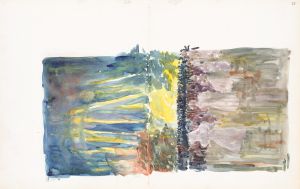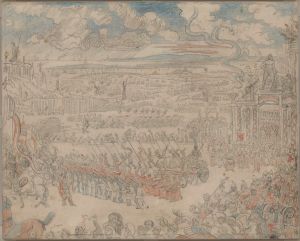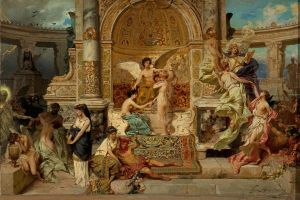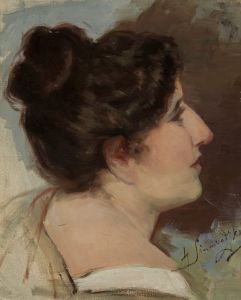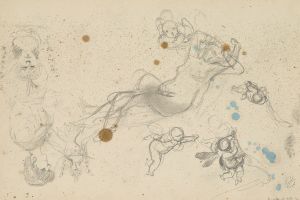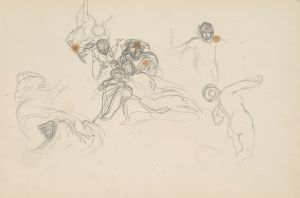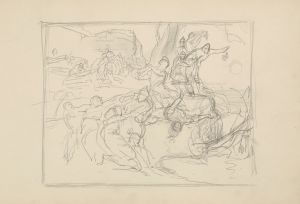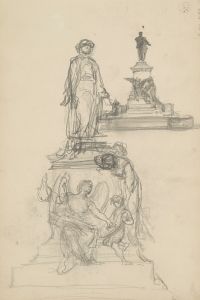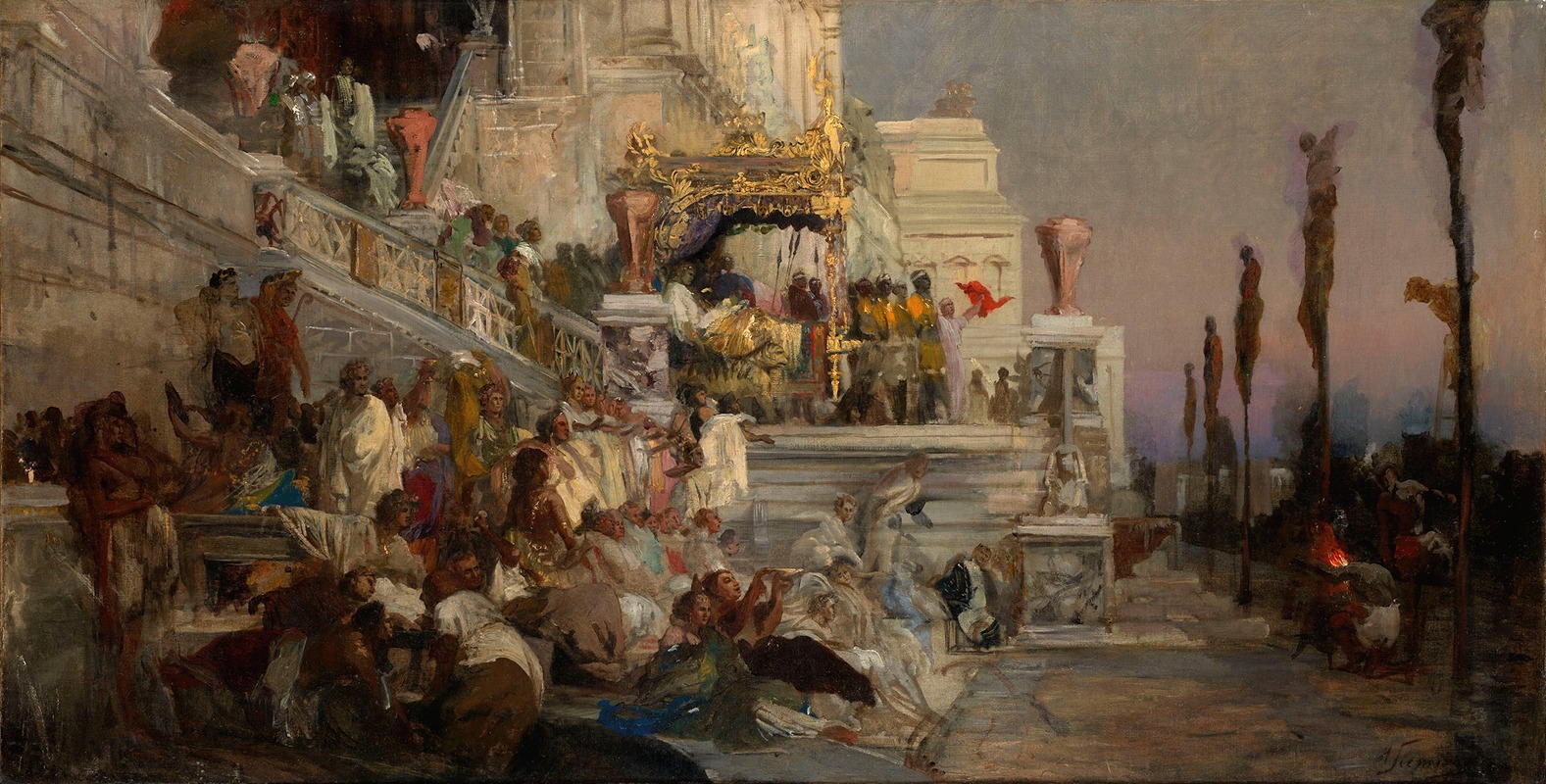
Study for the ‘Torches of Nero’
A hand-painted replica of Henryk Siemiradzki’s masterpiece Study for the ‘Torches of Nero’, meticulously crafted by professional artists to capture the true essence of the original. Each piece is created with museum-quality canvas and rare mineral pigments, carefully painted by experienced artists with delicate brushstrokes and rich, layered colors to perfectly recreate the texture of the original artwork. Unlike machine-printed reproductions, this hand-painted version brings the painting to life, infused with the artist’s emotions and skill in every stroke. Whether for personal collection or home decoration, it instantly elevates the artistic atmosphere of any space.
Henryk Siemiradzki's "Study for the ‘Torches of Nero’" is a preparatory work for one of the artist's most famous paintings, "The Torches of Nero" (also known as "Candlesticks of Christianity"). Siemiradzki, a Polish painter of the late 19th century, was renowned for his large-scale historical and biblical scenes, often characterized by their dramatic use of light and meticulous attention to detail.
"The Torches of Nero" depicts a grim episode from ancient Roman history, specifically the persecution of Christians under Emperor Nero. According to historical accounts, after the Great Fire of Rome in AD 64, Nero blamed the Christians for the disaster. As part of their punishment, he allegedly used them as human torches to illuminate his gardens at night. Siemiradzki's painting captures the moment before this horrific act, focusing on the emotional and physical suffering of the victims, as well as the indifference or curiosity of the Roman onlookers.
The study for this painting would have been an essential part of Siemiradzki's creative process, allowing him to experiment with composition, lighting, and the arrangement of figures before executing the final large-scale work. While the study itself may not be as detailed or polished as the completed painting, it provides valuable insight into the artist's methods and intentions. It likely includes sketches of the figures, preliminary ideas for the background, and notes on the interplay of light and shadow, which are crucial elements in conveying the painting's dramatic tension.
Siemiradzki's work is often associated with the academic art movement, which emphasized classical themes, precise draftsmanship, and a polished finish. His paintings frequently drew on historical and biblical narratives, rendered with a sense of theatricality and grandeur. "The Torches of Nero" is no exception, as it combines historical subject matter with a moral and emotional depth that invites viewers to reflect on themes of persecution, martyrdom, and the human capacity for cruelty.
The artist's ability to capture complex emotions and historical narratives in his work earned him significant recognition during his lifetime. Siemiradzki was a member of the Russian Academy of Arts and received numerous accolades for his contributions to the art world. His works were exhibited widely across Europe, and he was particularly celebrated in Russia and Poland.
While the study for "The Torches of Nero" may not be as widely known as the final painting, it remains an important piece for understanding Siemiradzki's artistic process and the development of one of his most impactful works. Through this study, viewers can appreciate the meticulous planning and creative exploration that underpin Siemiradzki's ability to bring historical scenes to life with such vividness and emotional resonance.





